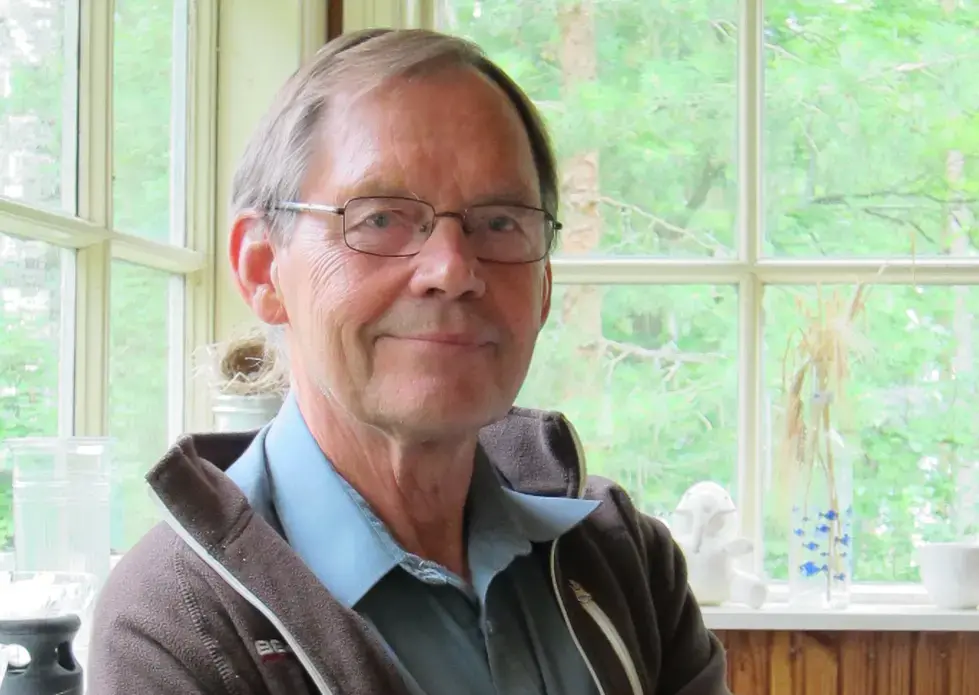This article was also published in The Atlantic.
Somewhere in Tampere, Finland, someone is excreting polioviruses. He or she has been doing it there since at least 2008, passing stools laced with polioviruses then flushing them into the sewers of Finland's third largest city.
Known in polio science circles as a long-term excreter, the unidentified individual is likely completely unaware of this quirk of his or her bowel. Merja Roivainen would very much like to find this person.
Roivainen is the director of the intestinal virus unit at Finland's National Institute for Health and Welfare. There she oversees a program of environmental surveillance for polioviruses—the routine testing of sewage samples from nine cities around the country. Tampere and its suburbs are home to about 300,000 people and a number of multinational companies, and it is one of the nine.
Finland's environmental surveillance program started in 1960 and for decades the country's sewage systems seemed to be poliovirus free. Bimonthly sampling turned up no wild polioviruses. (Scientists use the term "wild" polioviruses to distinguish between the viruses found in nature and the weakened viruses used in oral polio vaccine.) Because Finland uses injectable polio vaccine made with killed viruses, there were rarely any sightings of the altered live vaccine viruses that are hallmarks of oral polio vaccine use. Those viruses are called Sabin strains after the man who developed the oral polio vaccine, Albert Sabin.
Tests were also consistently negative for vaccine-derived polioviruses, a troubling byproduct of Sabin strains. These viruses, known by the nickname VDPVs, don't look exactly like wild polioviruses if you study their genetic codes. They have evolved from the Sabin strains, picking up mutations as they spread from human gut to human gut. But while they don't look exactly like wild polioviruses, they act like them. Just like wild polioviruses, vaccine-derived polioviruses paralyze a percentage of the people who become infected with them.
Finland's environmental surveillance program never found VDPVs. Never, that is, until late 2008. That December, sewage samples from Tampere yielded two VDPVs which had evolved quite substantially from the Sabin strains. "And since then we have found 13 sewage specimens positive for VDPVs. And they all have been collected from Tampere," Roivainen said. "Altogether, more than 70 VDPV strains have been isolated."
Science can estimate how long vaccine-derived viruses have been circulating—in other words, how long ago the vaccine dose that started the problem was given. They look at the genetic distance of the VDPVs from Sabin strains, then calculate the time based on the rate at which polioviruses are known to mutate. The person shedding the Tampere VDPVs has probably been generating polioviruses for 12 or 13 years, scientists believe.
Genetic analysis of the Tampere viruses suggests they have all passed through the gut of one person, likely someone whose immune system doesn't work properly. When healthy people get oral polio vaccine, their immune systems respond to stop the virus from replicating in their gastrointestinal systems. The antibodies generated in that process protect them against future infection. But in a small number of people the immune system doesn't shut down virus replication after vaccination, so they keep generating and excreting polioviruses.
Attempts to find Tampere's long-term excreter have been time consuming and frustrating. By studying the sewage system, Roivainen's team has homed in on the part of the city where the excreter lives. The problem is 30,000 other people live there too. The sewers, she says, have taken this investigation as far as they can.
Now efforts are focused on finding people known to have immunodeficiencies and asking them to submit stool samples for analysis. "But we have got only very few stool specimens till now and they all have been negative," Roivainen admits. "I don't know if we will ever be able to identify him or her."
Why bother, one might wonder. Even if Roivainen and her team find the long-term excreter, there is nothing medically that can be done to stop his or her virus-shedding problem. In some people shedding continues for decades. In others, it stops on its own. And in some cases, the viruses turn on the shedder, who develops polio.
Still, polio scientists are eager to get a better picture of who these long-term shedders are. That's because these people, some scientists fear, could potentially re-establish spread of polio if the global polio eradication campaign succeeds in stamping out wild polioviruses. Once wild polioviruses are gone, the World Health Organization will tell countries to stop using oral polio vaccine. Those that can't afford to replace it with the more expensive injectable vaccine will start to develop ever larger numbers of polio-susceptible children.
"I think they are a real risk," Tapani Hovi, a polio virologist who headed Finland's lab before Roivainen, says of vaccine-derived polioviruses. "Today still high vaccination coverage is preventing the problems which they potentially cause. But in future when the coverage will be decreasing, or even vaccination is stopping in some countries I'm afraid…the risks will be more realized."
While only about 40 long-term poliovirus excreters have been identified worldwide, no one knows how widespread the problem is. Hovi, for one, thinks there may be more of these people than scientists currently estimate.
He has known his share of long-term excreter frustration. During his time as lab chief, Hovi was involved in a search for a long-term excreter in Slovakia. (Finland's lab serves as the World Health Organization's polio reference laboratory for the five Nordic countries, the three Baltic states and Slovakia, Slovenia, Croatia and Austria.)
VDPVs had been found in sewage coming from Skalica, a town of 15,000 people located about 30 miles from Slovakia's capital, Bratislava. Working with sanitation engineers, researchers tracked the viruses to a branch of the sewage system that served five or six apartment blocks where about 500 people resided. Stool samples were collected from most of those residents. Analyzing that many stool samples is a lot of work, but the researchers thought they were on the verge of finding their man or woman. "And we couldn't find any polio virus in any of those (samples)," Hovi says.
It was later discovered two other buildings were illegally dumping into that sewage branch. But before further testing could be done, VDPVs stopped showing up in Skalica sewage samples. The trail went cold.
"It might have been possible to detect the person, but we didn't," Hovi says. "Perhaps he or she moved away. You never know. And also it is possible of course that he or she stopped shedding the virus."
- View this story on Pulitzer Center








